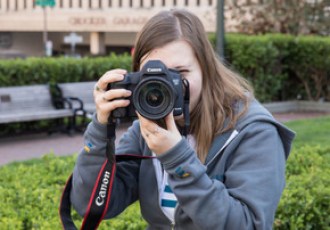BestReviews is reader-supported and may earn an affiliate commission. Details
We recommend these products based on an intensive research process that's designed to cut through the noise and find the top products in this space. Guided by experts, we spend hours looking into the factors that matter, to bring you these selections.

When taking photos and videos, having a smooth, steady shooting base will yield better results. In certain shooting and lighting situations, holding the camera by hand doesn’t give you the sturdiness you need. Instead, you may need a camera stabilizer.
For still images, a slight movement in the camera just as the photo is being recorded can result in a blurry image. This is a phenomenon called camera shake. It’s especially prevalent in low light photos. Video recording can contain sudden jerking motions if the photographer doesn’t hold the camera steadily when shooting. These motions are extremely distracting to viewers.
Camera stabilizers fix this problem. They absorb slight, inadvertent movements the photographer makes. These units are available with a variety of features and in a variety of sizes, so you can find the perfect stabilizer for your needs and to match your camera. Check out our top picks or read on to learn more about camera stabilizers.

The following is a list of functions that a camera stabilizer needs to be able to perform to give you the best results:
When selecting a camera stabilizer, having one that contains a three-axis gimbal provides the best performance. A gimbal allows an object to rotate smoothly around a single axis, ensuring it stays on the desired plane.
With a three-axis gimbal, the camera’s tilt, pan, and roll will be stabilized. No matter what slight movements the photographer makes, the gimbal adjusts and keeps the camera steady.
The gimbal works by tracking the movement of the photographer and compensating as required. It attempts to measure the difference between movement made purposefully and inadvertent movements. If you have a slight tremor in your hand while shooting, the gimbal would compensate for it, for example.
Pan
As the camera moves left to right on a horizontal plane, this is called panning. The gimbal keeps the camera’s movements smooth on the horizontal axis when you’re following a runner or animal moving through the scene.
Roll
For some shots, you may need change your position as a photographer, while keeping the subject in frame. The gimbal uses the roll stabilization to compensate for the movement you make forward and backward while walking into position. The gimbal keeps the camera from bouncing in relation to the horizon.
Tilt
As you move the camera up and down on a vertical plane, the gimbal will keep the camera steady. This allows the video to remain smooth when you’re shooting someone walking down a flight of stairs or something falling, for example.

Camera stabilizers have quite a large range in price. You can expect to pay at least $10 for a basic camera stabilizer, while high-end models will cost up to $1,000. There are many options in between too.
Basic
The most basic camera stabilizers carry a price point of $10 to $40. These stabilizer units won’t consist of much more than a handle with a single-axle gimbal that helps to compensate for slight movement. They’re usually made for smartphones or lightweight cameras.
Mid-range
In the middle range of price points, you can expect to pay $40 to $100. Some of these will be a single post that may be able to convert to a tripod. Many of these units will be made for heavier DSLR cameras. Some will have shoulder or arm braces to help support the weight of the stabilizer. Some three-axis gimbals are in this price range.
High-end
If you have high-end photography or video recording needs, a stabilizer in the $100-plus price range is a smart idea. These stabilizers will have three-axis gimbals, creating a steadier shot. They’re also strong enough to handle the weight of big cameras and lenses. You may be able to add extra gear, such as lights or a microphone, to the rig.
We’ve collected some tips to help you receive the greatest benefit from your camera stabilizer purchase.

Q. Can I operate a camera stabilizer with one hand?
A. Often, these units are made so the photographer can hold the stabilizer with one hand. The other hand then is free to control the camera’s settings and buttons. Some people do feel more comfortable holding the stabilizer with two hands for a more secure grip. You may want to use two hands when moving through a crowd, for example, where you may be bumped.
Q. What if I want to add extra lights or other gear to the camera stabilizer?
A. Some stabilizers are made to hold all your gear. You can add lighting or a microphone to the stabilizer, making it easier to record video. Having extra lighting attached to the stabilizer allows your hands to remain free, while keeping the light you need positioned properly near the camera.
Q. What are some other benefits of camera stabilizers?
A. When you want to shoot a photo of an object that’s tight to the ground, a stabilizer works well. Rather than laying on the ground to position the camera properly, you can just place the stabilizer near the ground and shoot the photo while standing. The same is true when shooting a photo of an object high above your head. The stabilizer helps you shoot all awkward angle photos or videos more successfully.
Get emails you’ll love.
Learn about the products you’re wondering if you should buy and get advice on using your latest purchases.
